
Features
Regulations
Safety
BUILDING A New Model
Was 2011 a bad year for Canadian aviation and is the level of aviation safety in this country stagnating?
March 22, 2012 By David Olsen with files from Matt Nicholls
Was 2011 a bad year for Canadian aviation and is the level of aviation safety in this country stagnating? Is our regulatory system working at the top of its game?
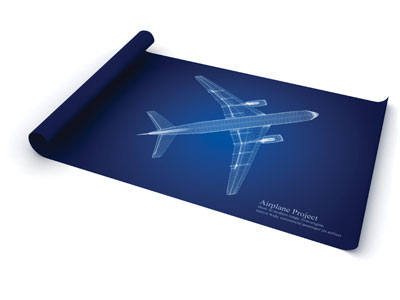 |
|
| Industry leaders from across the country are seriously evaluating the Transport Canada blueprint.
|
Intriguing questions all and given the way 2012 began with the fatal crash of a Keystone Air Service Piper PA-31 at North Spirit Lake on Jan. 10, followed shortly by a fatal RCMP helicopter crash near Chilliwack, B.C., the next week, it’s not surprising these issues are coming to the forefront.
In the latest International Civil Aviation Organization (ICAO) report “State of Global Aviation Safety – 2011” released last December, ICAO secretary general Raymond Benjamin stressed, “we will need to do more to maintain this [impressive] record” [of safety]. The ICAO report also clearly outlines that the state of global aviation is excellent, and that the global accident rate has essentially remained unchanged in the past 10 years.
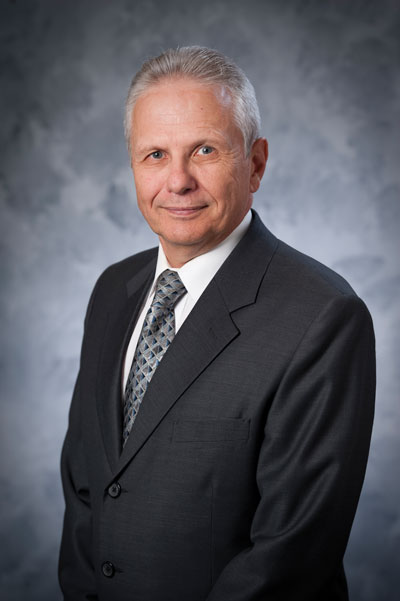 |
|
| “Our industry and the travelling public are economically disadvantaged because the regulatory process is inefficient, expensive, overly bureaucratic.” – Merlin Preuss, VP government and regulatory affairs, Canadian Business Aviation Association |
|
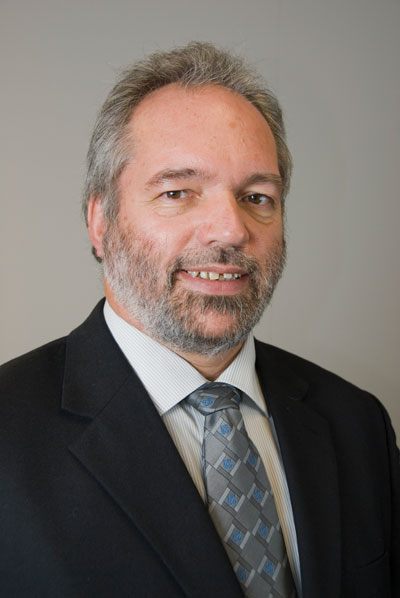 |
|
| “Canada’s safety record is among the best in the world, and TC is committed to maintaining and improving aviation safety.” – Transport Canada director general of civil aviation, Martin Eley
|
However, statistics and trends are only part of the story. In accidents and incidents, there is always a “why” the incident occurred in the first place – indeed multiple “whys.” For example, the Transportation Safety Board (TSB) January 2012 progress report of the investigation into the fatal First Air Flight 6560 Boeing 737 accident at Resolute Bay on Aug. 11 last year, classified the accident as Controlled Flight Into Terrain (CFIT). TSB was pursuing “several concurrent avenues of investigation, to understand why the aircraft struck terrain one nautical mile east of the runway.” Another important question: are we taking the right approach to regulations in Canada and specifically, can we do better? Do other countries have more efficient systems?
The CBC investigated these and other pressing questions in a compelling piece last November, exploring the importance of safety management systems (SMS) and the responsibility for compliance with regulations. Surprisingly, director general of civil aviation (DGCA) Martin Eley said, “it’s not our job to make sure you’re compliant.”
This response signalled what appears to be a fundamental shift in the role of our national regulator, at a time when the government was under fire from many sources for what was perceived as a cutback on safety oversight. Critics pointed to cuts in the number of TC inspectors just when accidents in northern aviation, float plane and helicopter operations appeared to be increasing. One newspaper even accused the government of “conducting a dangerous experiment with the lives of Canadian air passengers.”
The CBC charged TC with insufficient monitoring/audit and enforcement and improper use of SMS. But the key point is TC did not introduce SMS because it felt like it – it is an international obligation. The issue is not that TC, in a non-political regulator role, ignores safety. It does not – and in fact, as Eley told Wings, Canada has been a world leader in the adoption of safety regulation, SMS and more.
“Canada’s safety record is among the best in the world, and TC is committed to maintaining and improving aviation safety,” Eley said. “TC is implementing and strengthening a civil aviation performance management regimen that includes a national risk-based plan and inspection schedule that is in keeping with the plan, inspector training performance monitoring and quality assurance.”
But the question remains, as a government department, controlled by the minister and political party forming the government, can TC be non-political – or is it an instrument of the government of the day with all that that implies? And if the current political policy is to cut expenditures, cuts may bite into national and international statutory duties and functions of the safety regulation branches of TC. Should TC be re-established as a statutory authority for civil aviation safety at arms length from the government and which, like the TSB, reports to Parliament and not solely to the government of the day? These general principles are behind the civil aviation authorities of some states, particularly Australia, the U.K. and other Commonwealth countries (see “Beyond our borders,” page 22).
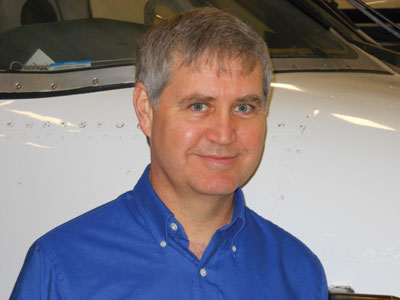 |
|
| “Our safety rate is still one of the best in the world, so even with the bad press, industry and TC are doing a lot right.” – Dennis Lyons, president of the Manitoba Aviation Council | |
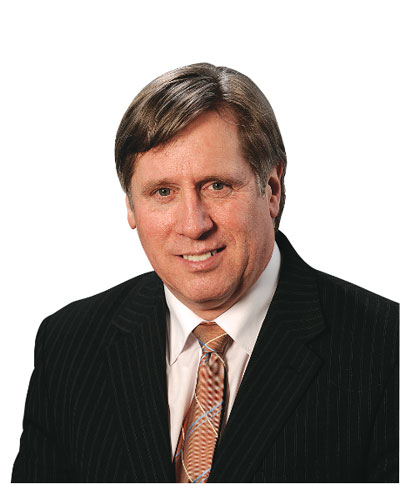 |
|
| “TC’s structure and culture make it difficult, if not impossible, to maximize use of existing human resources.” – John McKenna, president/CEO, Air Transport Association of Canada
|
In May of last year, the Air Transport Association of Canada (ATAC) presented an action plan at its symposium on “Transport Canada Level of Service” to deal with just these questions. The event brought together 10 national and regional associations to explore how TC could improve service to industry. The group developed an action plan with 21 recommendations on communications, delegation and targeted service improvement. The plan was presented to the minister of transport in October last year, and according to ATAC president/CEO John McKenna, is currently waiting for a date to discuss.
One of the key findings of the report was that, in its current incarnation, TC must be all things to all people – and this model is difficult to pull off. TC covers every facet of transport – even pipelines – and is on one hand an instrument of government political policy (which can be notoriously fickle) while on the other, the guardian of public safety, with national and international obligations. It’s hard to do both. The question is, how can we organize our safety assessment, monitoring and enforcement more effectively?
Dennis Lyons, president of the Manitoba Aviation Council (MAC), maintains that the current regulatory system in Canada is not broken; however its processes are burdensome and confrontational, instead of collaborative. He recognizes that some in TC are working to improve on these shortcomings. “Our safety rate is still one of the best in the world, so even with the bad press, industry and TC are doing a lot right,” Lyon says.
Merlin Preuss, vice-president government and regulatory affairs for the Canadian Business Aviation Association (CBAA), has a unique perspective on TC’s operations having served as DGCA for more than seven years prior to joining CBAA. He highlights the aviation safety record, documented by ICAO and TSB, as confirmation that industry, the travelling public and Canada’s trading partners need have no concerns about TC’s safety regulatory process.
“However, our industry and the travelling public are economically disadvantaged because the regulatory process is inefficient, expensive, overly bureaucratic, too prescriptive and unable to keep up with technological change and risk management innovations,” he says. As a result, Preuss notes, there are ongoing compliance costs, loss of competitive advantage and lost growth opportunities.
McKenna agrees and adds that part of the problem with TC is organizational: discrepancies that exist between TC regional operational units and national headquarters in Ottawa. The regional operations are the direct link with industry, supplying most of the services, while Ottawa establishes standards, guidelines and policies.
McKenna also suggests a human resources shortage, which causes backlogs of work, reduces the required level of service to industry and continues to be a major hindrance. “TC’s structure and culture make it difficult, if not impossible, to maximize use of existing human resources and until things change, progress will be very slow.”
Captain Bradley Small, Air Line Pilots Association (ALPA) vice-president and International Federation of Airline Pilots’ Association (IFALPA) director, is concerned by the inordinate time taken to enact recommendations of the TSB into improved regulations. “For example, take the RESA recommendations stemming from TSB’s investigation of the Air France Airbus A340 crash on Aug. 2, 2005 runway over-run in Toronto,” Small says. “Six years later, this recommendation is finally being processed into regulations.” Furthermore, ALPA is calling for “archaic flight time and duty time regulations for aircrews to be revamped” while industry is still trying to have science-based regulations approved.
Eley admits that TC does have a problem with processes on a number of issues, but is working to find a workable solution for industry – particularly when it comes to TSB investigations.
“Transport Canada is working hard at streamlining internal processes and redefining its regulatory governance so that regulatory amendments resulting from a TSB recommendation can be implemented more quickly,” he says. “A modernized CARAC (Canadian Aviation Regulatory Advisor Council) process will also contribute to implementing these recommendations sooner.”
Functionally dysfunctional
While industry experts contacted by Wings agree Canada has one of the safest, if not the safest operating environment in the world, they all contend that the nation’s regulating body isn’t so much as broken, as it is dysfunctional – and in its current state, is not producing the desired results. Preuss maintains the safety and economic benefits of the IMS (TC’s civil aviation integrated management system) and, more critically, SMS have yet to be realized.
Nevertheless, he points out that these systems indicate that, “TCCA is uniquely situated to make rapid decisions that could provide economic benefits to industry and the traveling public while improving an enviable safety performance.”
McKenna reiterates that inadequate HR planning, budget cuts and attrition have resulted in industry frustration with delays in getting even basic paperwork processed. Lyons agrees, adding that MAC has waited several months to meet the minister. MAC and other industry groups, including organized labour, have identified the dysfunctionality to the Minister and suggested a TC Industry Advisory Council.
ALPA’s Small suggests the role of Transport Minister should be just that – a dedicated minister to focus on transport issues. The current position is Minister of Transport, Infrastructure and Communities. “Far too often, the Minister (Denis Lebel) is too busy to meet on transport issues because of the demands of infrastructure and communities,” says Small.
Eley disagrees and notes the diverse nature of the position is accurately reflected in the current portfolio. “Transportation systems, infrastructure and communities are intrinsically linked,” he argues. “The Minster of Transportation, Infrastructure and Communities, supported by Transport Canada and Infrastructure Canada, serves Canadians through the promotion of safe, secure, efficient and environmentally sustainable transportation systems and public infrastructure in Canada.”
A question of service
Another issue TC faces, say industry experts, is organizational – it is hindered by the current management structure in its goal of meeting the needs of the aviation industry, the travelling public and employees (for example, pilots, AMEs). Lyons suggests that although the current system relies on risk management and level of service systems, privately operated aircraft and those who maintain them outside the AMO system are never audited for compliance, obviously a real concern.
“The level of service model doesn’t work,” he says, “nor is it enforced by TC, while every company appears to have major delays with TC for service delivery.”
Another service concern, notes McKenna, is the fact TC rarely interfaces with passengers – something critics maintain is highly worthwhile and in many ways, is a missed opportunity. The U.K.’s Civil Aviation Authority (CAA, see “Beyond our borders”) has a consumer protection group and recently launched a dedicated website portal for passenger advice and support.
From his vantage point, Preuss maintains TC’s current organization and management structure leads to confusion and inequities in the marketplace and extra overhead costs to government and taxpayers. He stresses that regulatory standardization across the market is essential for a level economic playing field and productive working relationships between regulators and those regulated.
“Except for the oversight of, and service to, the large airlines,” he says, “Canada’s aviation safety program is delivered by five regions, and aviation safety officials report in-line to the regional directors general.”
Preuss adds that, although on paper TC headquarters has authority to ensure program activities adhere to national standards, in reality, without a clear line of authority over regional officials, it is very difficult and often impossible to do. The result is that standardization issues often force industry to go “region shopping” to find the most efficient way to get necessary approvals and authorizations.
To ALPA, it’s obvious that with present fiscal restraints and staff levels, TC is barely keeping its head above water, “having to give its attention primarily to crisis issues, to the detriment of less demanding but nevertheless required actions to improve safety,” says Small.
Building a new mousetrap
So, could there be a better way to regulate, monitor and improve aviation safety in the future – and if so, how? Lyons offers an emphatic “yes.” He contends that if TC and industry met to boldly address the issues, a more a viable system could be designed and implemented. “This new system would very likely look different from what we have today, and if done properly, I am sure there would be some services delivered by other agencies allowing TC to focus on oversight of all the industry.”
Coming together on issues surrounding SMS is also paramount, says Small. The SMS program is based on the principle that operators and employees are best placed to determine their risks and should be able to fix safety deficiencies before they become accidents. “However, an important oversight role for the regulator is to ensure that operators have an effective SMS program, and ALPA feels that the aviation industry is so varied and complex that a single focal point for the regulatory system must remain,” he says.
Preuss maintains TC should reorganize its model based on mode instead of region. “[With this model] you would end up with modal assistant deputy ministers (ADMs) instead of one safety and security ADM. The regional structure would be left to support personnel in the field, providing a focus for politically driven regional issues.” Preuss adds that while creating a civil aviation authority has some appeal, it could be an expensive proposition for industry, and favours making existing processes more efficient and effective, not making change for change sake.
McKenna agrees, particularly when it comes to SMS. “SMS was intended to make operators more responsible and accountable for safety, and industry has gone a long way to embrace that culture,” he says.
McKenna identifies the problem that Transport Canada regional operational units either resist changing from their traditional role to the new SMS supervisory mandate, or they are insufficiently trained. “Thus industry is asked to accept the new regulatory supervision and inspections, but TC inspectors are often unclear as to their modified mandate. They tell carriers that their Quality Assurance Program doesn’t meet requirements but they won’t say what needs correcting – consequently, the previous relationship, where TC assisted carriers to improve safety, has become one of strict enforcement.”
Industry experts Wings spoke with suggest actions needed to improve the safety regulation model include better communication, delegation and cooperation, including sharing lessons learned during audits. Preuss also places high importance on reducing what appears to be a risk-averse mentality in TC, with performance-based regulations and risk management based SMS solutions needed to replace prescriptive regulations to mitigate safety risks. Preuss echoes McKenna in calling for improved delegation to industry, to reduce delays for important and costly issues.
“We’re not talking about delegating responsibility, but administrative processes such as temporary approvals of additional aircraft on an operating certificate, or delegation of authority to host professional pilot exams,” says McKenna.
Lyons pinpoints fixing CARAC as a key issue, citing the enactment of regulations from many years ago being enacted, which contradict newer NPA’s still in the queue (for example, TAWS/GPWS, while new aircraft are being built with EGPWS). ALPA’s Small agrees and details three other key actions:
- Accelerate the regulator’s response time and decision-making process for changes that do not imply or require regulatory change.
- Re-vamp the regulatory change presently effected through the CARAC process. Streamline CARAC attendance to stakeholders who really need to be there. Keep the group as small as possible.
- When a Notice of Proposed Amendment (NPA) is approved by the Civil Aviation Regulatory Committee (CARC), it often becomes moribund or dies before going to Gazette I. This needs to be fixed.
Such suggestions would certainly help, and Eley contends changes are in the works to help streamline TC’s processes. “Transport Canada works in partnership with other international civil aviation authorities on topics of interest regarding SMS requirements and implementation activities,” he says. “The department benefits from collaboration and sharing of lessons learned and best practices.
Looking ahead, TC is taking action to:
- Improve the responsiveness of the rulemaking process.
- Increase the effectiveness of system-based surveillance.
- Introduce internal quality assurance assessments, as part of the Integrated Management System (IMS).
- Complete the National Organization Transition Implementation Project (NOTIP) “Once completed, these initiatives will collectively define how Transport Canada’s Civil Aviation Directorate will operate in the years to come,” says Eley.
Changes like these can’t come soon enough, notes McKenna, who suggests that Canada, “once having inspired many of the changes promoted by ICAO, is now lagging behind because of structural inefficiency and cultural resistance to ideas it came up with a few years ago. Other jurisdictions are pushing forward to adapt to the new reality.”
Preuss concurs, noting that the government is slow to use what is already available to improve safety performance and reduce regulatory and cost burdens. Small has a practical suggestion – visit other agencies, discuss how each manages regulatory issues and changes, then take the best methods of each and tailor that to Canadian needs.
“Canadians are resourceful people,” he says, “and with determination to improve what is already a relatively healthy system, they can create the regulatory system that they need and deserve.”
| By the numbers In 2010, ICAO recorded 121 scheduled commercial flight accidents compared to 113 in 2009 – a marginal rate increase. And while overall fatalities in 2010 were below those in 2005 and 2006, there was an increase from 2007 to 2010. Preliminary 2011 statistics published by TSB Canada in January 2012 show that in general, after the accident “blips” from 2008 to 2010, 2011 was generally a good year – things did not get worse. The bad news is, helicopter accidents did increase. The other issue is public perception. In our instant society with instant communications, video and news reports can create in the public mind a perception that all is not well, even if the dry statistics show otherwise. Statistics can also be confusing – and in some cases, misleading. The Aviation Safety Network (ASN, a service of the Flight Safety Foundation) statistics to Dec. 31 2011 show global multi-engine airliner fatal accidents and total fatalities reflect a downward trend, and that for total worldwide fatalities, 2011 was the second “safest” year since 1945 – the third-safest year as noted by number of accidents. For 2011, ASN recorded 28 fatal airliner accidents, resulting in 521 fatalities in the air and on the ground: lower than the 10-year average of 764 fatalities. But this information comes with caveats. A multi-engine airliner is defined by ASN as one where the basic model has been certified for carrying 13 or more passengers, which means that many aircraft used in demanding environments in the Arctic and sub-Arctic, Africa, South America and Asia are not included. And a multi-engine airliner may or may not be an ICAO “scheduled commercial flight.” TSB Canada, on the other hand, has a clearly defined set of parameters for its statistics, which are readily available on its website (http://www.tsb.gc.ca/eng/ ). Beyond our borders In the U.S., the Federal Aviation Administration (FAA) has great strengths, but just as many weaknesses note its critics, including trying to fulfil a dual role of promoting and regulating U.S. aviation. In the U.K., the Civil Aviation Authority (CAA) has a sound formula that seems to work, as a number of countries have taken a similar route, such as Australia (where the Civil Aviation Safety Authority of Australia is an independent statutory authority), New Zealand and others. The CAA, is a public corporation, established by British Parliament in 1972 as an independent specialist aviation regulator. It boasts a unique situation in that it receives no government funding and is required to be self-supporting. It also reports to Parliament rather than the government of the day, although the minister can give direction on certain matters. Important information can also be gleaned from annual reports. Transport Canada presents an annual report to the Governor General; and the Minister of Transport has a statutory responsibility to table in Parliament each year a brief overview of the state of transport. Every five years, an expanded, more comprehensive review is tabled as per Section 52 of the Canada Transportation Act (1996), as amended June 2007. But brief is the operative word. The 2010 report on Canadian aviation and aviation safety amounted to just three-and-a-half pages. Compare this with the 2011 report of the U.K.’s CAA at 110 pages – and the 2010/2011 report of the Civil Aviation Safety Authority (CASA) of Australia at 192 pages. Perhaps, ALPA’s view that Canada should look around the globe and glean best practice deserves consideration. |